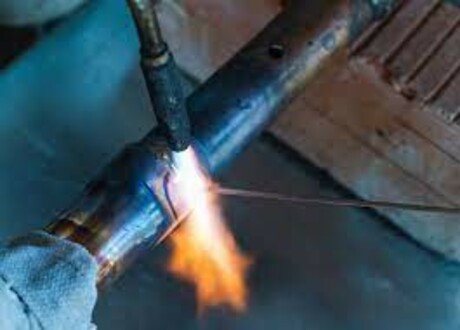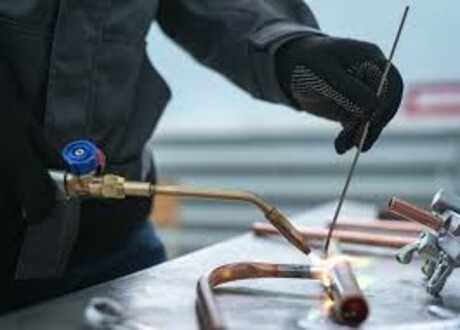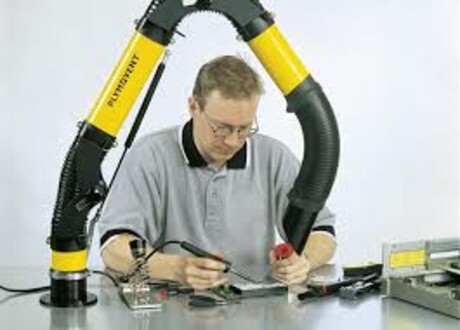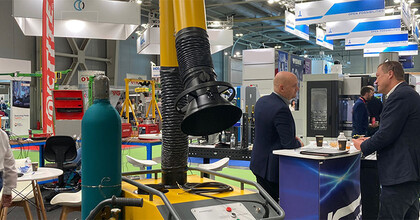Lead is a metal widely used in the industrial sector, though due to its high level of toxicity in the human body, its use has been gradually reduced. In this post we will talk about the use of lead, its effects on the human body and the symptoms of lead poisoning.
At Plymovent we have a wide variety of industrial fume removal equipment that extracts gases, substances and particles from their source, avoiding inhalation and the consequent negative effect that this metal has on the human body.
What is lead?
Lead is a metallic chemical element that has great flexibility and is part of many chemical composites. This heavy metal is very abundant in nature, so its use was very prevalent for several years. The ease with which it melts or its hardness when cold made lead a very practical material. However, lead has been found to cause poisoning and it has various other negative effects on people’s health. That is why it has been replaced by other less toxic materials such as plastic.
The different uses of lead
It is impossible to know for sure which culture was the first to discover lead and benefit from its applications. Though thanks to several ancient texts, it is known that the ancient Egyptians, Hindus and Hebrews were among the first to use it. Egyptians were the pioneers in using lead in cosmetics, fishing nets, enamels and ornamental objects.
In more recent times, lead has been a very useful material in the industry due to its multiple uses as it is used to manufacture e.g. pipes and ducts. On the other hand, lead was also used as an anti-knock agent in gasoline and as an attenuator against sound waves and mechanical vibrations. Currently, its use as an additive in gasoline has been banned.
Nowadays, due to the evidence of the toxicity of this metal, it is used as:
- Coating for electrical connections
- Production of cable jackets
- X-ray shielding
- Containers containing radioactive materials or hazardous chemicals
In addition, lead is used in the manufacturing process of ceramics, plastics, and solder alloys, as well as firearm ammunition and battery contacts. Due to the high strength of this material and its ability to act as a barrier in ionizing radiation, lead is used to treat radioactive materials. In other applications this metal has often been replaced by less toxic materials such as plastic or other materials.
Lead poisoning
Lead is considered a toxic metal that contaminates the body, and causes a disease known as plumbosis or saturnism. This substance is absorbed through the skin, respiratory or digestive routes, as well as affecting the nervous and renal systems. As for the human body, lead is a substance that is difficult to eliminate, which is why its effects are very adverse.
Effects of lead poisoning include:
- Kidney damage
- Brain damage
- Dizziness
- Vomiting
- Diarrhea
- Miscarriage during pregnancy
- Decreased fertility
- Learning difficulties in children
- Anemia due to destruction of blood hemoglobin
The effects of lead can also be reflected in the nervous system and cause behavioral alterations such as aggressiveness, hypersensitivity, or impulsive behavior.
The occupational hazards of lead poisoning
Lead is a toxic substance that accumulates in the body, affecting various body systems, with very harmful effects on young children. One of the most likely ways to get lead poisoning is through the lungs and skin in a contaminated work environment. Or by digesting it in food, beverages, and tobacco. It is distributed in the body until it reaches the brain, liver, kidneys and bones.
Human exposure to lead is usually assessed by measuring the concentration of lead in the blood. That's why we have systems that will help you extract toxic substances, such as lead, from the air. This will prevent them from reaching the airways of your workers.
Activities that can lead to lead poisoning during the workday may include:
- Lead Smelting & Refining
- Construction Industries
- Battery Manufacturing & Recycling
- Soldering Objects and Lead Alloy
- Manufacture and use of paints, enamels and varnishes
- Lead-using plastics industry
- Manufacture of explosives, ammunition and use in enclosed places
- Manufacture of cables and wire drawings
- Printing Types Manufacturing
- Demolition work such as scraping, burning, and oxyfuel cutting of lead-containing materials
How to protect yourself against lead poisoning?
At Plymovent we care about the air you breathe, which is why we have systems available to our customers that extract all the substances and particles that can be inhaled during the working day and that are harmful to the body. If you have any questions, do not hesitate to contact us through the contact form on this website or by phone.
At Plymovent we have a specialized team of professionals who will help you choose the industrial exhaust removal system that best suits your needs. Our goal is to capture all particles before they reach the breathing zone of workers.
That's why we clean all types of work environments because:
At Plymovent we care about the air you breathe!






